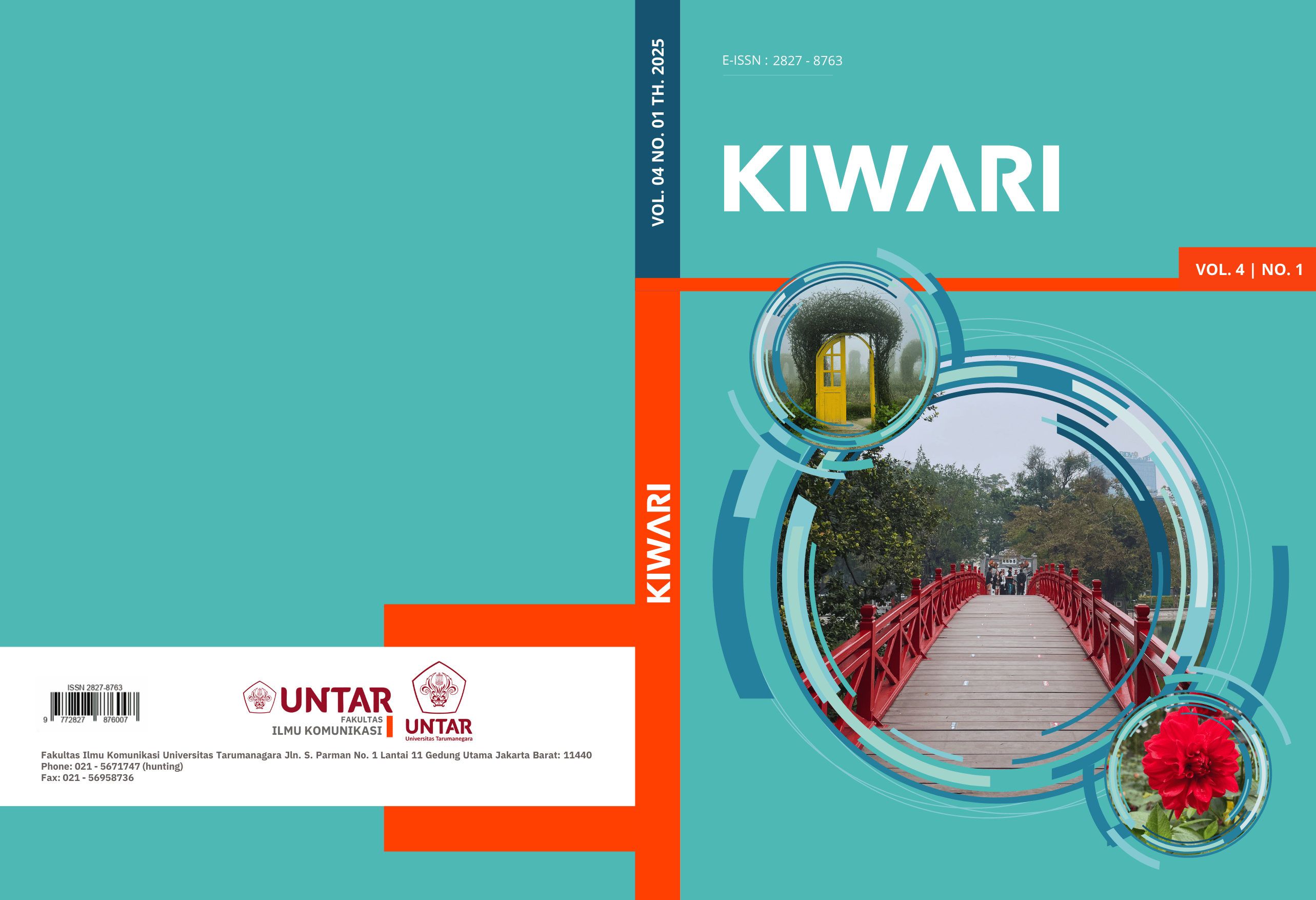Pergeseran Pola Komunikasi Keluarga di Kalangan Remaja akibat Telepon Pintar
Main Article Content
Abstract
Perkembangan teknologi digital, khususnya telepon pintar, telah membawa perubahan besar dalam pola komunikasi keluarga, terutama di kalangan remaja. Telepon pintar menjadi alat utama untuk komunikasi dan hiburan, tetapi penggunaannya sering kali menggantikan interaksi tatap muka yang lebih mendalam. Berdasarkan teori determinisme teknologi, telepon pintar tidak hanya memengaruhi cara manusia berinteraksi, tetapi juga membentuk pola komunikasi dan hubungan sosial. Remaja mulai belajar bagaimana menghadapi emosi kompleks, termasuk ketidakpastian, kebingungan, serta kebutuhan untuk menemukan jati diri. Selain itu, remaja berada dalam fase di mana kontrol diri dan regulasi emosi sangat diuji. Penelitian ini bertujuan untuk memahami pola komunikasi remaja pengguna telepon pintar dalam keluarga di era digital. Hasil penelitian menunjukkan bahwa interaksi keluarga cenderung berubah menjadi lebih fungsional, dengan komunikasi yang lebih sering terjadi melalui perangkat digital. Penggunaan telepon pintar secara berlebihan juga berpotensi mengurangi kualitas komunikasi emosional dalam keluarga, meskipun memungkinkan remaja tetap terhubung secara virtual. Strategi pengelolaan penggunaan teknologi untuk menjaga kualitas hubungan interpersonal di tengah era digital.
Article Details

This work is licensed under a Creative Commons Attribution-NonCommercial-ShareAlike 4.0 International License.
This work is licensed under a Prologia Creative Commons Attribution-ShareAlike 4.0 International License.References
Adeline, C., & Irwansyah. (2022). Determinisme Teknologi: Penggunaan Ict Dalam Pembelajaran Daring (Vol. 8, Issue 1).
Ayu, I. P., & Lintang, R. R. (2019). KOMUNIKASI KELUARGA DAN PENGGUNAAN SMARTPHONE OLEH ANAK. https://lifestyle.kompas.com/read/2018/04/1
Creswell, J. W. (2018). Research Design: Qualitative, Quantitative, and Mixed Methods Approaches (5th ed.). SAGE Publications.
Hajar Mohd Salleh, S., Mohd Hafiz Norzan, Nik Ruzyanei Nik Jaafar, Shalisah Sharip, Ammar Ashraf, Kamaleshini Shanmugam, Nur Shahirah Bistamam, Najat Emir Mohammad Arrif, Marhani Midin, & Saathish Kumar. (2021). Excessive smartphone use and its correlations with social anxiety and quality of life among medical students in a public university in Malaysia: A cross-sectional study.
Jehalut, F. (n.d.). Kerangka Konseptual Teori Determinisme Teknologi (Vol. 1, Issue 1). Oktober.
Kemp, S. (2021). Digital 2021: wawasan terbaru tentang “kondisi digital.” We Are Social.
Mella-Norambuena, J., Cobo-Rendon, R., Lobos, K., Sáez-Delgado, F., & Maldonado-Trapp, A. (2021). Smartphone use among undergraduate stem students during COVID-19: An opportunity for higher education? Education Sciences, 11(8). https://doi.org/10.3390/educsci11080417
Merkaš, M., Bodrožić Selak, M., & Žulec Ivanković, A. (2024). Problematic Smartphone Use and Communication in Families with Adolescents. Adolescents, 4(1), 107–119. https://doi.org/10.3390/adolescents4010008
Moleong, L. J. (2018). Metodologi Penelitian Kualitatif. Bandung: Remaja Rosdakarya.
Nowell, L. S., Norris, J. M., White, D. E., & Moules, N. J. (2017). Thematic Analysis: Striving to Meet the Trustworthiness Criteria. International Journal of Qualitative Methods, 16(1). https://doi.org/10.1177/1609406917733847
Putri Agustina, A. (2023). GLOBAL KOMUNIKA Perubahan Pola Komunikasi Keluarga di Era Digital.
Rahardjo, M. (2020). Studi Kasus sebagai Metode Penelitian. Jurnal Ilmu Pendidikan Dan Perilaku.
Safira, V., Ah, Q. ’, & Wijayani, N. (2023). DIGITAL PERENTING: STUDI KASUS DAMPAK SMARTPHONE TERHADAP KUALITAS KOMUNIKASI KELUARGA. Jurnal Sosial Dan Humaniora, 1(2), 314–319. https://doi.org/10.62017/arima
Santrock, J. W. (2020). Adolescence (17th ed.). McGraw-Hill Education.
Septiana, N. Z. (2021). Dampak Peggunaan Media Sosial Terhadap Kesehatan Mental Dan Kesejahteraan Sosial Remaja Dimasa Pandemi Covid-19. Nusantara of Research : Jurnal Hasil-Hasil Penelitian Universitas Nusantara PGRI Kediri, 8(1), 1–13. https://doi.org/10.29407/nor.v8i1.15632
Spradley, J. P. (2016). Participant Observation. Waveland Press.
Steinberg, L. (2020). Adolescence. New York: McGraw-Hill Education.
Sugiyono. (2019). Metode Penelitian Kualitatif, Kuantitatif, dan R&D. Bandung: Alfabeta.
Wacks, Y., & Weinstein, A. M. (2021). Excessive Smartphone Use Is Associated With Health Problems in Adolescents and Young Adults. In Frontiers in Psychiatry (Vol. 12). Frontiers Media S.A. https://doi.org/10.3389/fpsyt.2021.669042
World Health Organization. (2022). Adolescence: A period needing special attention. WHO.
Yin, R. K. (2017). Case Study Research and Applications: Design and Methods. Sage Publications.
Yin, R. K. (2018). ase Study Research and Applications: Design and Methods (6th ed.) (6th ed.). SAGEPublisher.



